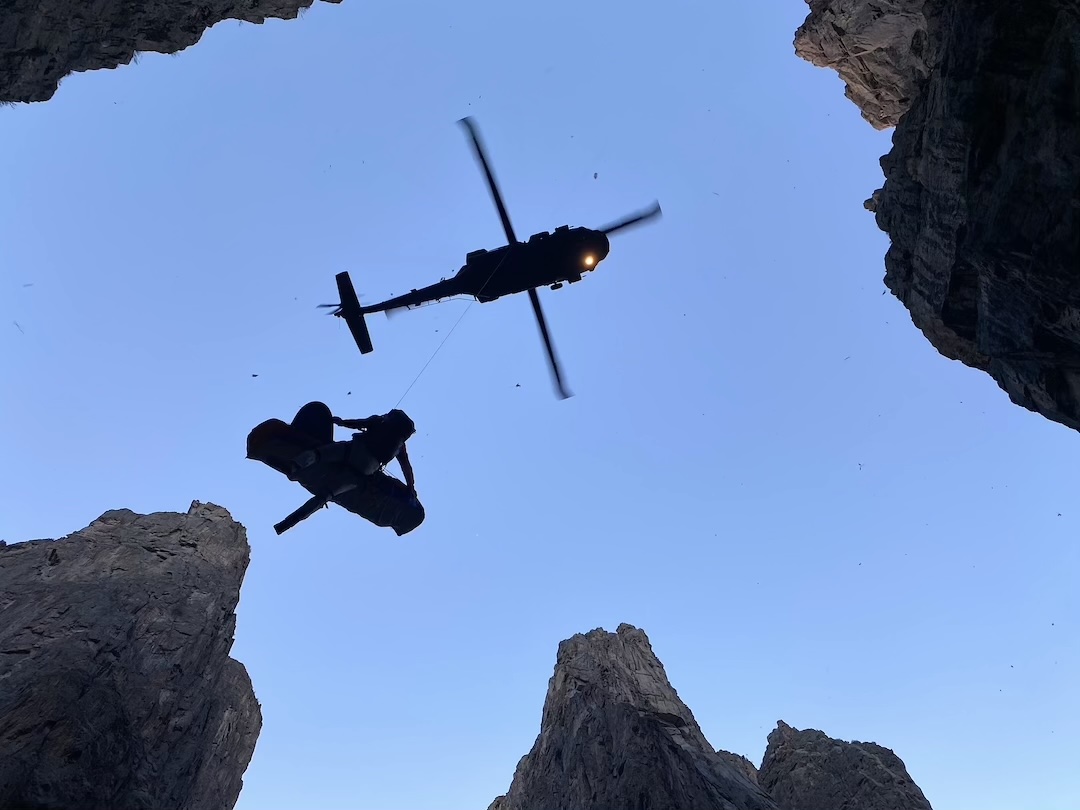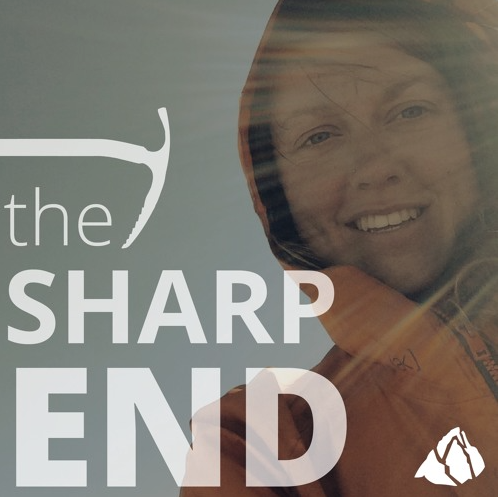Ledge Fall — Foothold Broke, Protection Pulled Out
Colorado, Black Canyon of the Gunnison, Long Draw

Around 7:30 a.m. on September 11, Becca Steinbrecher (30) took a serious leader fall on Great White Wall (1,300 feet, 5.10d), below the North Rim in the Black Canyon. She fell at the beginning of pitch four on a relatively easy pegmatite ramp (5.8), 300 feet above the ground. As she started up from the belay on a sloping, broken terrace, protection was sparse. She ventured off route in search of gear. After placing a number 2 Metolius TCU, she made her way back to the pegmatite ramp. As she attempted a mantel, a foothold broke. The rock around the TCU fractured, and the protection pulled. Becca fell 30 feet to the terraced ledge and was knocked unconscious.
Her climbing partner, Skyeler Congdon (40), did not move her because he was concerned about a spinal cord injury. “There’s like no good answer for that situation,” he later said in an interview with the Grand Junction Daily Sentinel. After a half an hour, he decided to secure Becca to an anchor, rappel the route, and retrace the team’s approach up the Long Draw (gully). From there, he planned to seek help at the North Rim ranger station. The station was about an hour’s hike from the base of the route.
When Congdon arrived, there was no one at the ranger station. He then drove his car to get cell reception up the road. He called 911 and eventually his report was forwarded to Black Canyon ranger Ryan Rees, who began preparations for the rescue and passed Incident Command to district ranger Ryan Thrush. They rounded up a SAR team that eventually numbered 28 personnel and secured a helicopter from the Army National Guard High-Altitude Aviation Training Site (HAATS) at Eagle, Colorado.
By 1:20 p.m., the SAR team had assembled at the ranger station. Becca had been on the pitch-four ledge for over five hours. It was unknown if she was still alive.
Vic Zeilman, a former NPS climbing ranger and Black Canyon guidebook author, was a SAR volunteer on that day. He wrote to ANAC: “I would describe the rescue as being multifaceted, time sensitive, and complex, with a lot of unknowns right out of the gate. For that reason, we had a Plan A and Plan B happening simultaneously. Plan A was to utilize aviation resources if it was possible to either short-haul or hoist Becca. Plan B was to lower an attendant from the rim to near the base of the Great White Wall so that Becca could be raised back to the rim.”
Both plans required that SAR personnel descend into the canyon, climb to Becca, and then lower her to the base of the climb. From there, she could be lowered down-gully to a more open area near the bottom of the canyon and airlifted (Plan A) or delivered to a team to be raised 1,300 feet to the rim (Plan B).
A climbing team including Zeilman, and led by NPS ranger Philippe Wheelock, departed at 1:45 p.m. They descended Long Draw and climbed to Becca. They radioed climbing NPS ranger Tom Schaefer—who was manning operations on the canyon rim—that Becca was unconscious but alive.
It was 4 p.m., and it would take over an hour for the HAATS helicopter to arrive. With sunset at 7:30 p.m., there was an ever-narrowing window for aerial extraction, as HAATS would not fly into the canyon in the dark. In the meantime, Schaefer had organized Plan B. This contingency required two rescue teams—one to rig the immense litter raise and another team to help transport the patient to the raise location.
Around 5:15 p.m., the climbing team lowered Becca to the base of the route. When the helicopter arrived and landed on the rim, Schaefer considered two options: either lower Becca down 600 feet of steep gully for the helicopter evacuation or move her 200 feet up to where she could be raised.
It had been almost 11 hours since Becca’s fall, and the helicopter was the fastest option to get her to critical care. The risk lay in any unforeseeable delay in getting her from the climb’s base to the bottom of the canyon. If they took too long, they would need to backtrack, do the Plan B litter raise, carry Becca to an ambulance, drive to Montrose, and so on. The decision was made to lower Becca. It was a tense race against time. The veteran climbing/SAR team had less than an hour to complete a complex 600-foot lower that involved the time-consuming task of passing two knots.
They made it with little time to spare. Just after 7 p.m., the HAATS helicopter flew in, lowered the hoist, and departed with the injured climber.
From the Montrose airport, the injured climber was transferred to St. Mary’s Regional Hospital in Grand Junction. Besides her brain injury, Becca’s injuries included a collapsed lung and several broken bones, including the pelvis, elbow, ribs, neck, and shoulder. She required three months of hospitalization. Her condition improved slowly. Ashton Johnston, ANAC’s Western Slope editor, said, “Becca relayed to me that she expects a full recovery.”
ANALYSIS
Former ranger and guidebook author Vic Zeilman wrote: “The items in Becca’s pack showed that they were properly prepared for a long climb in the Black Canyon: clothing, food, water, headlamps, etc. They carried radios with them. Skyeler left one radio with Becca and brought the other with him to the rim. Although it ultimately didn’t matter because she was unconscious, it could have played an important role.
“One item that could have been very beneficial would have been a SPOT device or something similar. There is no cell phone service in the Black Canyon (or even at most places on the North Rim), so response time can be delayed because the uninjured climber needs to descend the wall, then hike back out to the rim to call for help. Although a SPOT device is not guaranteed to work below the rim, I would rather have the option than not. Skyeler and Becca were capable, prepared, had a plan, filled out a permit, etc. The accident was just the luck of the draw when dealing with climbing in the Black Canyon.”
Becca wrote to ANAC about the lessons she learned:
• Always do multi-pitch with a satellite device that texts (calls are spotty in the Black) to speed up rescue time.
• Fund and support SAR.
• Wear a helmet. Mine saved my life.
• Learn self-rescue skills. Do refreshers and know the local SAR contact wherever you go.
• The Black is chossy. This route has many reports of loose rock. Climbing is dangerous, rock breaks sometimes. (Sources: Tom Schaefer, Vic Zeilman, Climbing .com, Becca Steinbrecher, Grand Junction Daily Sentinel, and the Editors.)


